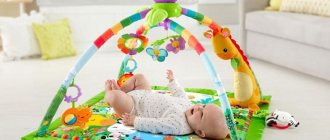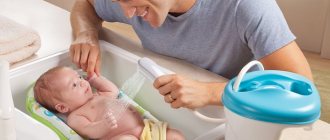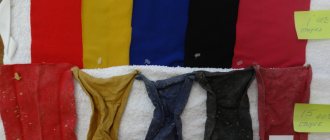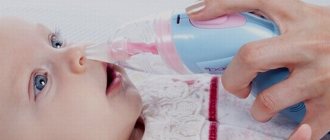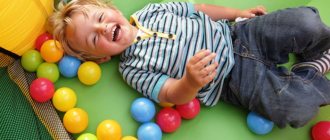A long-awaited baby has appeared in the family. The joy of fatherhood or motherhood brings a wide range of new responsibilities into the life of a married couple. The baby requires constant attention. How to gain the necessary mobility for a small family member without harming him, we will talk in this article.
“You can’t bear your own burden,” we say, but sometimes you still need to free your hands for a series of everyday tasks. Especially in cases where it was “successful” to accustom the baby to hands. Constantly carrying a newborn who is growing by leaps and bounds is not easy.
Fortunately, modern parents have many practical inventions in their arsenal that make it much easier to fulfill their wonderful role. A simple and functional invention comes to the rescue, by analogy with the Australian marsupial animal wittily named “kangaroo”. Carrying newborns in this device can, in some cases, replace bulky strollers.
Kangaroo pouch for newborns
The kenguryatnik is successfully used not only for carrying newborns, but also for older children.
The bag (backpack) is secured through the adult’s shoulders and waist using secure straps. The “passenger” is placed in a bag niche in a lying position. As the child grows up, he or she can be transported while sitting. In both options, the baby is secured inside the carrier with a special fastening.
A small backpack-bag with a soft frame under the general name “kangaroo” provides parents with the necessary mobility. In such a chair, the child sits or lies, pressing his stomach against the parent. The baby's legs hang down, receiving support from the kangaroo straps. Carrying a child in such a device by household members is convenient for both parties.
Precautionary measures
Keeping your baby in a certain position for a long time and limiting his movements can lead to blood stagnation and rapid fatigue. To avoid this, it is recommended to use the kangaroo for no more than 1-2 hours . Every 20-30 minutes it is advisable to take a break and remove the newborn from the bag. This will allow both the child and the mother to rest.
The baby's legs and arms should remain free. A wide seating area helps spread the child’s legs and provides additional prevention of dysplasia.
Parents should also pay attention to ensure that the straps and other parts of the bag do not rub the child’s skin, and that the headrest securely fixes his head.
You should not use baby kangaroos when cooking, being near a hot stove, or eating.
When carrying a child using a baby carrier, a young mother should be especially careful and attentive, because such a device somewhat blocks the view.
Watch the video:
How to carry a baby forward-facing in a baby carrier:
Benefits of kangaroo care for newborns
- The baby is constantly under supervision;
- Mother or father have the opportunity to do housework;
- The device makes walking easier: you can completely abandon strollers and not carry the child in your arms;
- Close physical and psychological contact is provided with the child, who feels safe and cared for.
- Methodical rocking perfectly lulls the baby;
- The invention is indispensable for single parents;
- Economical kangaroo.
Physiology of the position of the child’s legs
In a kangaroo, the legs are located non-physiologically : the main load falls on the baby's perineum. This is fraught with additional stress on the hip joints, which interferes with their proper development.
In an older child, dangling legs, among other things, also interfere with the mother while walking and cause anxiety to the baby himself (therefore, carrying more than 9 kg in a kangaroo is difficult and uncomfortable for both an adult and a child).
In a sling, the baby's legs are positioned physiologically and orthopedically correctly. The infant's immature hip joints should be bent at the knees and apart at an angle that is comfortable for the child. This position is not only comfortable when worn both in a sling and in your arms, but also serves as a prevention of hip dysplasia.
At what age is it acceptable to carry a kangaroo?
Having understood the positive characteristics of the device, parents think about when they can use a kangaroo for newborns. This is not an idle question: there are certain nuances here:
- A newborn baby's skeletal system is fragile.
- Many areas of the bones are more likely to be cartilage tissue.
- The muscular frame has not been formed to support the back in a sitting position.
Therefore, until the baby is 4 months of age, until it gets stronger, it should be carried in a supine position.
Some modern models allow the use of kangaroos to carry children from the first days of life. But the baby must lie down.
Pediatricians recommend using vertical kangaroo carriers for infants only when the child is sitting independently. “Seizing the moment” is the task of parents.
Duration of use of slings and kangaroo carriers
Kangaroos can be used infrequently and for a short time; such carriers are suitable for relatively light children ( weighing up to 8 kg ). This is due to the fact that the kangaroo unevenly distributes the baby’s weight over the adult’s body due to narrow straps, the lack of additional support in the lumbar region or its inadequate imitation. A kangaroo baby is literally suspended by the crotch. The adult's center of gravity shifts, and the mother is forced to strain her back to maintain balance. The weight of the child falls on her shoulders, and the narrow straps put pressure and rub the skin.
The sling can be used from birth to 2-3 years, with older babies whose weight has reached 16-25 kg . The sling evenly distributes the baby's body weight over the adult's back and shoulders; with the help of the sling, the baby is well attracted to the mother, so that a single center of gravity is formed . The sling panels, spread over the shoulders and back, do not press or cut into the body due to their larger area compared to a kangaroo backpack. Thanks to this, the weight of even a heavy baby is almost imperceptible.
How to carry a baby in a kangaroo carrier
No matter how perfect the design of the baby carrier is, you need to adhere to the rules for carrying a baby so as not to harm the child.
- Carefully check that the device is securely fastened.
- It is preferable to carry the baby facing an adult. In this case, it will be possible to avoid unnecessary stress on the spine of mom or dad: with this method, the baby will lean back slightly, which creates a good counterbalance.
- The child should be pressed against the parent's torso, and not dangle.
- Children who cannot sit are placed in a kangaroo in a semi-lying position. The spine of such children is not yet supported by its own muscular corset, and a sitting position can lead to deformation and other troubles.
- To avoid strong pressure on the baby's perineal area, he should be carried with his legs wide apart.
- If the baby has a history of orthopedic diseases, injuries, or low muscle tone, the kangaroo pouch will have to be abandoned.
- It is not recommended to carry a child in a shoulder bag for a long time. Still, the load on the spine always exists. A kangaroo is still an auxiliary device, a “substitute” for a stroller.
- After walking in a carrier bag, the baby needs a light massage of the back and legs with light strokes from top to bottom.
- Monitor the condition of your child's skin. If you find any abrasions from tight straps or irritation, immediately treat the surfaces and adjust the straps.
- Carrying a baby in a kangaroo is a load on the adult's spine. So for osteochondrosis, scoliosis and other diseases of the musculoskeletal system, it is worth considering other methods of transportation.
Sling or kangaroo: which is better?
- To choose a baby carrier or the best baby sling, you need to evaluate both options. A comparison of two devices for carrying children can begin with the principle of the effect of each of them on the child’s body. Thus, a sling carrier for newborns distributes the baby’s weight evenly over his body, which ensures minimal pressure on the still immature spine. In a kangaroo, the baby, as a rule, is in a vertical “sitting” position, which creates a serious load on the baby’s back, which is unsafe. In this regard, baby slings are more suitable for a newborn than kangaroo carriers.
- In the question of what is more convenient for mom - a sling or a kangaroo, the answer will again be on the side of a kangaroo sling for children. The fact is that the baby sling does not shift the center of gravity, ensuring an even distribution of the load. When using a kangaroo carrier, the baby's weight rests solely on the woman's shoulders, creating discomfort for the back.
- The difference between a sling and a backpack for carrying children is also in the way they are attached to the mother’s body. Winding a fabric scarf, for example, can take a woman a lot of time if she does not have sufficient experience and dexterity. It is especially problematic to tie a sling on the street without outside help. Putting on a kangaroo for newborns is extremely simple - like a backpack, forward or backward.
- It takes less time to place a child in a baby carrier. To do this, just take the baby in your arms and carefully place him in the device so that the baby’s legs stick out of the special slots. Properly placing a baby in a kangaroo sling is not so easy, and the mother may need help from loved ones.
- A kangaroo is more suitable for walking than for use at home, which is why many carrying models are equipped with all kinds of pockets, compartments for small items and children's accessories. A sling is a good option for the home. Having tied the baby to her, the woman can do household chores, and when the baby falls asleep, she can calmly transfer it to the baby’s cradle.
- A sling is a great option for winter. A child dressed in tights, pants, a sweater, jacket and other warm clothes can easily fit into this carrier. A kangaroo backpack is not suitable for use in the cold season - a toddler dressed in overalls simply will not fit in it.
- A baby placed in a kangaroo pouch is unlikely to be able to fall asleep peacefully, and if this happens, his sleep will be fleeting due to the pressure of the individual elements of the carrier and the uncomfortable position. In a sling, the baby falls asleep quickly, as a rule, only after taking a horizontal position. While walking, the device sways, lulling the child to sleep. Such information adds another advantage to a baby sling when choosing a carrier for a newborn.
- If she wants to breastfeed her baby, the mother will have to take him out of the kangaroo pouch, remove the device itself, and look for a place to temporarily place it. If a woman uses a kangaroo sling, she just needs to pull the baby closer to her and hide it from prying eyes with a piece of fabric.
- In kangaroo care, the baby's legs hang down, which creates a serious load on the baby's perineum and lower spine. A kangaroo sling is more comfortable: the newborn's legs are spread wide and hug the mother's torso, due to which the weight is distributed on the baby's hips and the woman's waist.
- An important role is played by the straps of devices for carrying children. In kangaroos, they are thinner, denser, and can dig into the skin, which will certainly darken the mother’s mood during a long walk. The sling's straps are soft and wide.
Dr. Komarovsky on many children's websites and print publications gives brief advice on using baby carriers. The pediatrician considers both devices to be practically harmless, and the difference between a sling and a kangaroo is that a baby can be carried in a sling from birth, and in a kangaroo for a baby - from the age of two months.
How to choose the right kangaroo bag
The stores offer a variety of models of portable devices.
To choose a comfortable and practical bag, follow the rules listed below.
- In a good kangaroo, the fastenings are made using carabiner or latch technology. Duplicate belts will also ensure that the child is securely fastened.
- The width of the belts should be between 5-8 centimeters with elastic foam padding.
- Pay attention to the waist belt. It should be wide and soft enough to protect the adult’s spine from overload and securely fix the bag.
- The base of the bag should be rigid and not subject to deformation. This way you can ensure reliable fixation of the child's back when carrying.
- For infants under six months of age, the bag should be equipped with a reliable and high headrest.
- Babies are growing “by leaps and bounds.” Therefore, the bag must be adjusted to the weight and height of the child.
- The inner surface of the kangaroo made of natural materials will not only provide comfort to the child, but also protect against allergic reactions, support air circulation and heat exchange.
In a word, when choosing a baby carrier, the purchase must be assessed in terms of convenience and safety for the child, functionality and service life.
When to use kangaroo
When buying a kangaroo, keep in mind that a newborn baby up to 3 months can only be carried in a lying position until he learns to hold his head for a long time. This is where the “kangaroo” model comes from.
For children of different ages, it is necessary to choose “kangaroos” of different designs.
Later, when the baby is strong enough, you can start carrying him in an upright position. But this must be done very carefully. After all, by seating the baby in a device that is convenient for her, the mother can harm him. If the child is not 6-7 months old, his skeleton is still soft and fragile. The spine cannot withstand the load, the spinal column is bent, and the vessels are compressed. Which affects the baby’s health with headaches and intracranial pressure.
You can begin to carry the little one vertically with the help of a kangaroo when the skeleton has become quite strong. The baby should begin to sit independently for a relatively long time. This happens between 6 and 9 months.
One more nuance that a mother must take into account when she decides to buy a kangaroo backpack. If the baby has weak muscles, then carrying is contraindicated. With underdeveloped neck muscles, one awkward movement by the mother can lead to dire consequences. The same thing happens if the baby has weak pelvic muscles. When in an upright position, the entire load goes to the fragile pelvis, and bone deformation can occur, which will affect the formation of the genital organs, especially in girls.
You can start carrying girls in a kangaroo upright no earlier than 7-8 months.
When your little one has grown up and become strong, then you can safely put on a “kangaroo” and go for a walk. But to determine at what month you can start wearing a baby in a kangaroo, it is better to consult with an orthopedic doctor. After all, only he will be able to expertly assess the condition of the baby’s musculoskeletal system and give recommendations on the use of the new product.
Summary
No matter what age you plan to start carrying your baby in a “kangaroo” for children, after weighing all the positive and negative aspects, you can easily choose the right model. It is important to take into account the health characteristics of the baby, consult a doctor so as not to cause harm, and find out how to carry children of different ages.
Let your baby grow up healthy and make you happy every day with his successes.
Modern parents are trying to use various newfangled devices to make caring for and handling their baby easier. One such device that has become very popular recently is a kangaroo for carrying newborn babies. What is it and what is this unique thing for? Read in the article.
A kangaroo bag/backpack/carrier is a special device for carrying newborn babies. It is attached to the parents' shoulders and belt using reliable fasteners. The child is placed inside the carrier in a lying or sitting position (depending on the child’s age) and secured with a special belt (See the picture above).
Advantages of kangaroo carriers:
- the child is nearby and always under supervision;
- a woman’s hands are free and she can independently perform certain household chores;
- with such a device, walking will become a real pleasure (you don’t need to carry a heavy stroller down the floors and push it in front of you for several hours);
- the baby, feeling the warmth and closeness of his mother, will be calm, and will quickly fall asleep under the steady rocking;
- Compared to expensive strollers, the “kenguryatnik” is a fairly economical and profitable purchase.
Advantages of a kangaroo backpack for mother and child
The advantages of a baby carrier are:
- the baby is calm, because he is always close to his parents and can quickly fall asleep;
- since her hands are free, mom can do other things or engage in hobbies at the same time;
- the absence of additional items - a stroller, a bulky bag - will greatly facilitate preparation for a walk and going down stairs;
- A wide range of kangaroos is replete with offers for different budgets, but a backpack will definitely cost less than a good stroller.
Kangaroos must be selected in accordance with the age and weight of the child, so that the weight is distributed correctly and the baby does not get tired in an uncomfortable position.
Advantages and disadvantages
Each children's product has its pros and cons. The obvious advantage of a backpack over a stroller is compactness and mobility.
If you are thinking about purchasing a baby carrier, check out the advantages of the device:
- Adjustable for any family member. Both mom and dad can put on the kangaroo; the size is adjusted with seat belts. The sling can be worn even over a thick down jacket and other outerwear.
- Three baby positions. In universal models there are three backrest angles: lying down, reclining and sitting. Changing the inclination is carried out using one belt.
- Being close to the mother calms the baby and helps the child fall asleep as quickly as possible.
- Opportunity to do household chores. Hands are free, a young mother can fold things, hold a book or wash dishes.
- Child safety. In this position, the baby is always under the mother’s wing; there is no need to leave the child unattended.
- Benefits for the baby. This is how the baby develops, learns about the world and gets to know his mother and father better, studying his native facial features.
When carried, the mother's hands get less tired, and the baby can be rocked to sleep while simply doing homework. Parents have more free time and energy.
But carrying it has its drawbacks:
- Age restrictions. Not all models are suitable for the baby. If a child is diagnosed with spinal problems, a kangaroo cannot be used. You can purchase bags that will help cure or alleviate your baby’s illness.
- Load on the spine. The sling is held on the shoulders. The arms are free and not loaded, but the back takes the brunt of the blow. After carrying your baby in a carrier for a long time, back problems may occur.
Baby carriers are not recommended for use by people with scoliosis and other back problems. Before making a responsible purchase, consult with a pediatric orthopedist and pediatrician.
Useful video
The best kangaroos for a child
| Brand | For whom | Advantages | average price |
| Cybex First.Go | Children from birth to three years (3.5-18 kg) | Can be worn in four positions, the backpack can be adjusted according to the child’s height, there is a removable insert for a newborn, natural and durable materials | 6000 rubles |
| Cybex 2.GO | For children over three months | An improved model with adjustable straps and sizes, a hood, safe and durable materials | 6000 rubles |
| Manduca Baby Carrier | Children from the first days of life to three years (3-20 kg) | Three wearing positions, special insert for newborns, 100% natural and pleasant to the touch fabrics, wear-resistant and hypoallergenic, light weight and compact size | 8000 rubles |
| Chicco Go Baby | Allowed for children from birth to 1.5-2 years, but not recommended for newborns and babies under 6 months (up to 9 kg) | Classic model with two wearing positions, affordable price, durable material and fittings, correct and strong stitching, rigid back and bib included | 1500 rubles |
| Baby Bjorn Original | For children from birth to 1.5-2 years (3.5-12 kg) | High quality, safety and hypoallergenic, made of 100% cotton, adjustable foot position, additional pillows and pads | 6000 rubles |
| Baby Bjorn Active | For active parents, children over 1 week up to 1.5-2 years (3.5-12 kg) | Allows you to walk and travel for a long time with your child, the presence of additional belts for fixing the head of a newborn, safety and high quality of the model | 8000 rubles |
| GLOBEX Koala | For children over 3 months (3-10 kg) | Anatomical and practical model, adjustable straps and sizes, rigid back, availability and low price | 800 rubles |


